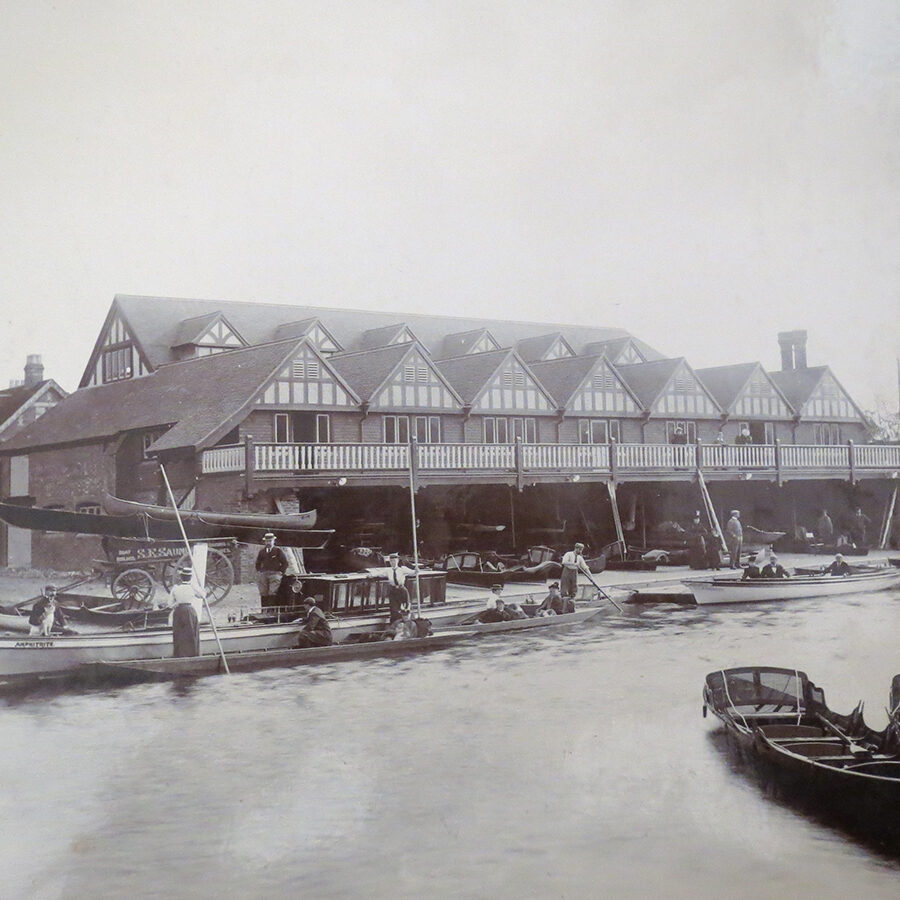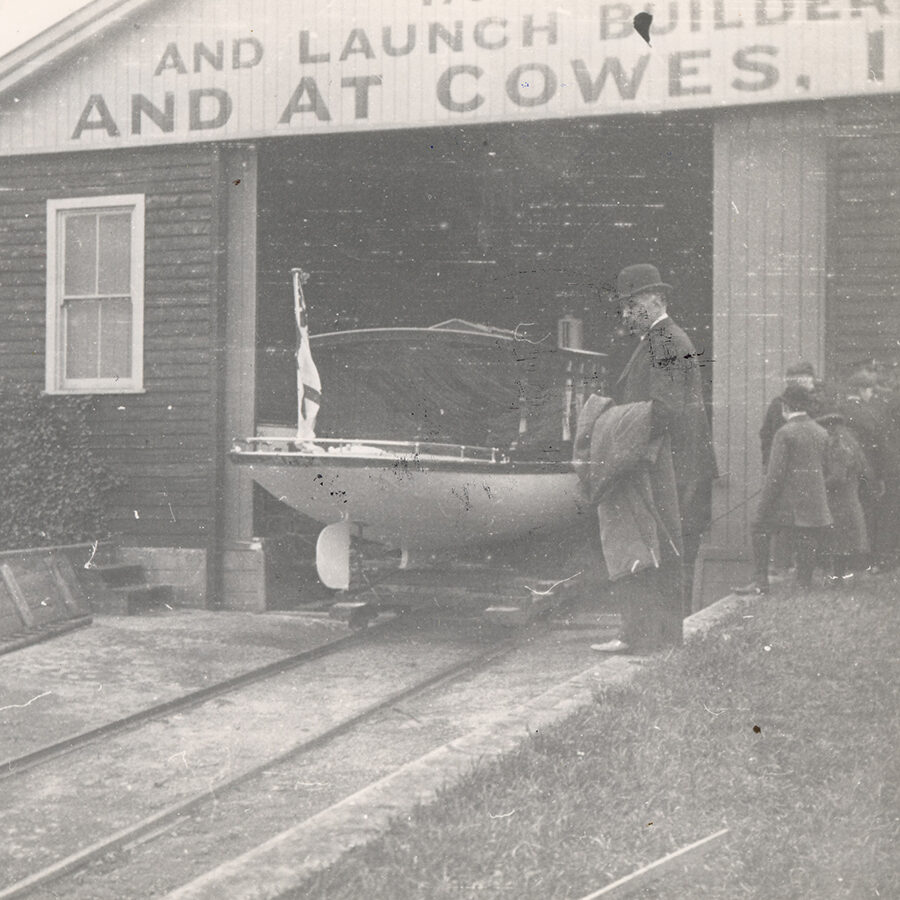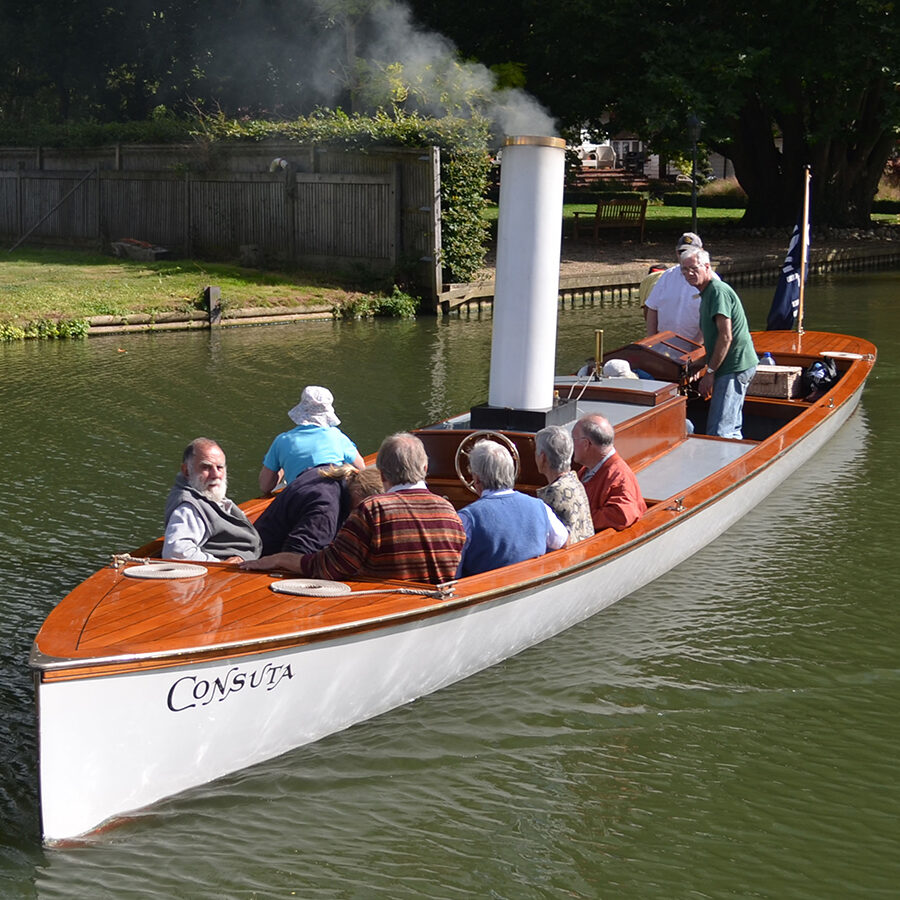
Saunders Boat Business
The Saunders family started building and hiring boats at the Swan Inn at Streatley around 1870. Thanks to the Thames boating boom in the 1880s their business grew from making punts and skiffs to building steam and electric launches. Samuel Saunders, the eldest son, needed space to expand and moved across the river to Goring where he set up on his own. Architect designed, his smart new boathouse and showroom by the bridge, opened in 1894, soon could not cope with the orders for Sam’s renowned fast racing boats. By 1897 Sam was leasing land upriver at Springfield on the boundary with South Stoke where he put up new boatsheds employing 30 craftsmen.
He decided to give up the small boat business altogether and focus on building speed launches at Springfield. He sold up in Goring and founded the Saunders Patent Launch Building Syndicate in 1900 to raise capital.

International recognition
Sam’s fame spread amongst the international boating set who commissioned marine craft. It was difficult to test these on the Thames due to speed limits and Sam decided to set up another yard on the Isle of Wight, haunt of the rich and famous. He moved to Cowes in 1901, taking with him a team of designers and engineers.
Saunders continued to produce boats at Springfield until 1911, when the works was sold to Hobbs of Henley.
On the Isle of Wight Sam Saunders went from strength to strength, moving into aviation, registering many patents and mixing with royalty. By 1920 S.E. Saunders Ltd had a London office and styled itself ‘Engineers, Yacht and Aircraft Builders’. The company was given a Royal Warrant by King George V. In 1929 Sam joined with Sir A.V. Roe to form Saunders-Roe, a company that specialised in flying boats. The family connection with the company died with Sam in 1933.

Consuta
In the late 1890s Sam developed a revolutionary new material for building boats. It was called ‘Consuta’ from the Latin ‘sewn together’ and consisted of layers of plywood stitched with copper wire and impregnated with a waterproof solution. Consuta was very light, allowing boats to go much faster than before. Sam was invited to build a new umpire’s launch for Henley Royal Regatta which was capable of about 20 mph and minimised wash. It was launched in 1898. This boat, actually named Consuta, the first to be made with the new material and of novel design, was a great success and provided an excellent advertisement for Saunders’ products. Recently this boat, for many years used by the BBC commentators on the Boat Race, has been fully restored and can be seen regularly once more on the Thames.
